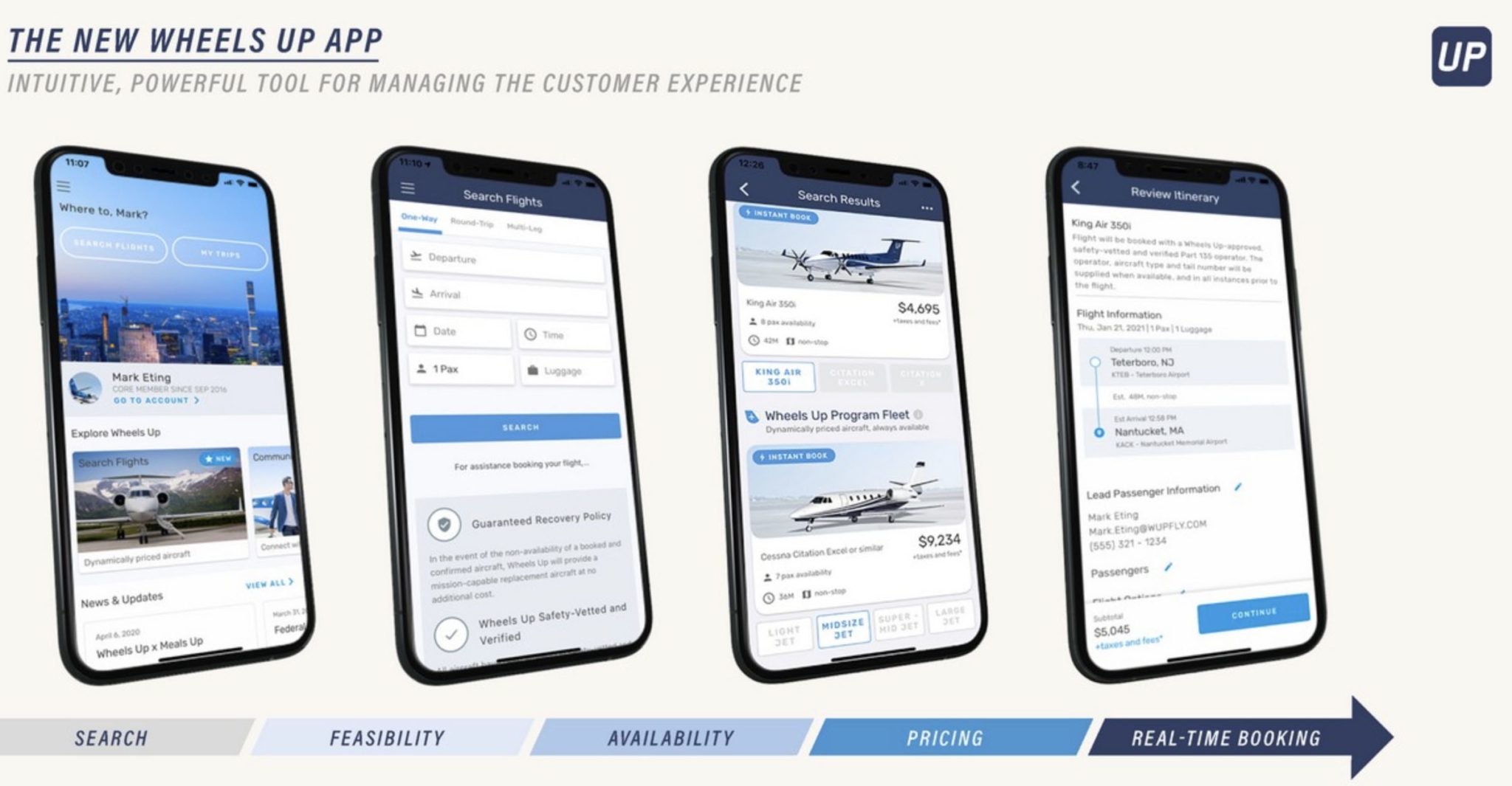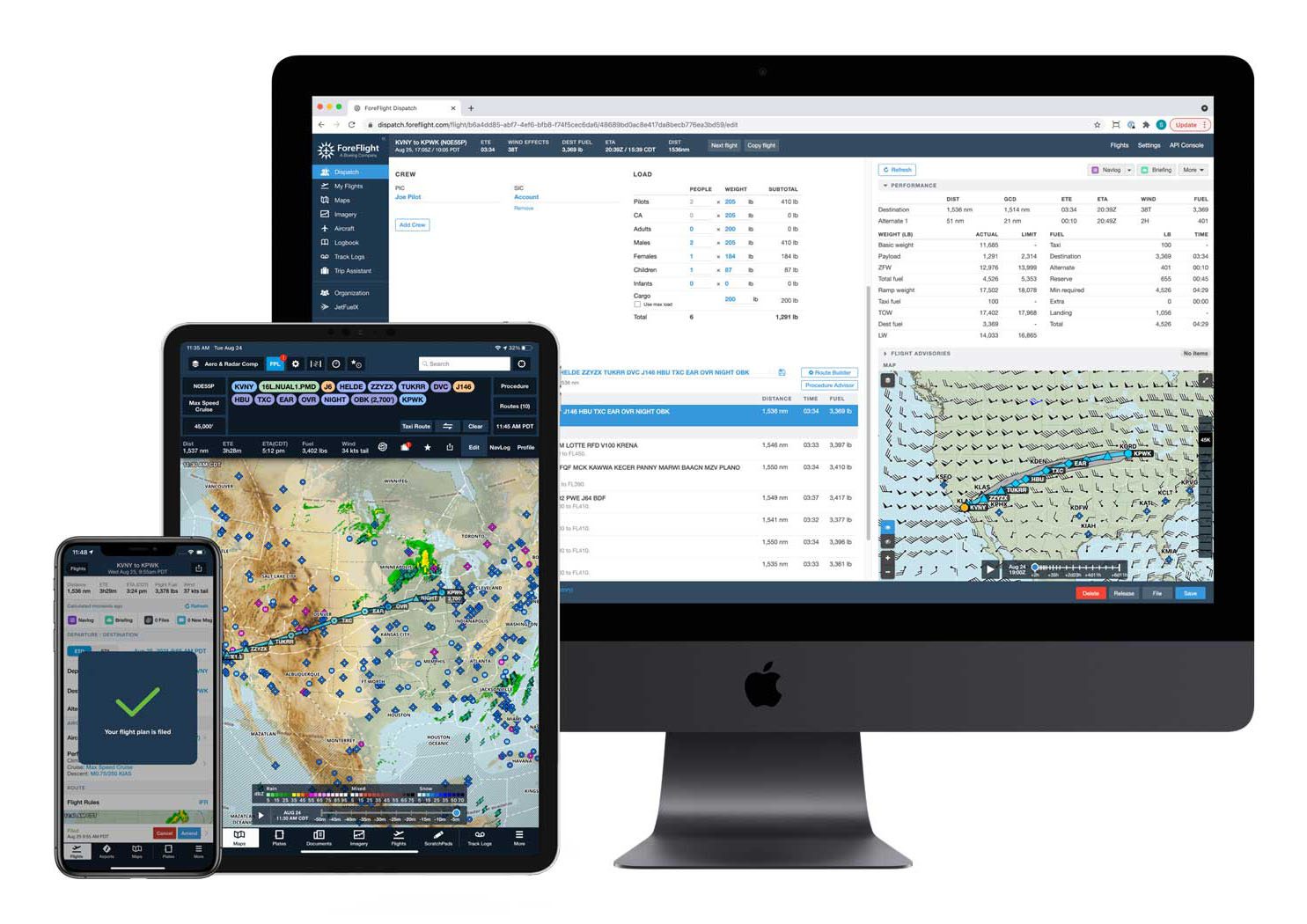Aviation app roundup—news from NBAA and beyond
|
Getting your Trinity Audio player ready...
|
The business aviation world descended on Las Vegas this week, as NBAA held its annual convention for the first time since 2019. In addition to news about the latest business jets, there were a number of interesting announcements from app companies. Here’s a quick recap of some headlines, plus other app news over the last month.
Uber for jets?
Perhaps the most interesting news at NBAA came from Kenny Dichter, founder and CEO of Wheels Up. The private aviation membership company has seen business surge during the pandemic, as travelers seek out alternatives to the airlines. Dichter expects that trend to continue—in a panel discussion, he suggested private jet volume could increase 10 to 20 times over the next two decades.
To do that, booking a flight will have to get much easier, so Wheels Up is working on exactly that. The company recently hired Vinayak Hegde, formerly of Airbnb and Amazon, as its new president and he has some big technology plans. Promising to upgrade both the behind-the-scenes processes and the customer-facing app, he suggested the lessons of Silicon Valley apply to aviation: “if you make buying easier… more and more people will come and buy from us.” Time will tell if this revolution comes to pass, but Wheels Up recently went public so it has the money to try.
ForeFlight grows dispatcher tools
As the dominant electronic flight bag app, ForeFlight has grown far beyond its days as a basic chart app. At NBAA this week, it showed off a full suite of business aviation features and previewed some upcoming enhancements. ForeFlight Dispatch, a browser-based tool, is the hub for dispatchers or pilots during preflight planning. This includes weather briefings, a powerful routing tool, FBO information, and even ground transportation time estimates. All of this information can be shared with pilots on their mobile devices.
A recent focus for ForeFlight has been runway analysis, a critical but surprisingly complicated task for jet pilots. This add-on service has steadily added aircraft profiles in recent months, and offers detailed performance calculations—including engine-out procedures and maximum available payload—for dozens of popular models. ForeFlight also upgraded their weight and balance tool, integrating this into the standard preflight planning flow in the Flights tab. This feature is available now for Business Performance subscribers, and is coming to individual Performance Plus subscribers soon.
ForeFlight also previewed some upcoming features, like Fuel Planner. This goes beyond a simple “how much fuel do I need for this flight” calculation by examining multiple legs at the same time. It suggests whether, based on fuel prices and weather conditions, the pilot should tanker fuel or buy it at one of the airports en route. Fuel Planner can even pull in contract fuel prices and consider minimum FBO fuel loads to deliver the most accurate numbers. ForeFlight also dropped hints about an eAPIS tool, to help pilots comply with US Customs and Border Protection reporting requirements, which is coming soon to Dispatch.
New app from APG
In other app news, Aircraft Performance Group (APG) announced the launch of their iPreflight Genesis Pro product, an all-in-one tool for business jet pilots and dispatchers. The new software, available in early 2022 for web browsers and for iPad, covers each part of a flight, from runway performance calculations and global flight plan filing to charts and weight and balance data. There are two subscription levels: Performance includes runway analysis and weight and balance; Navigator adds complete flight planning tools.
iPreFlight Genesis Pro is a collaboration between three companies, all owned by AFV Partners, an investment group. The app is an effort to pull together each company’s unique strength into a single solution: APG is a longtime leader in runway performance data, Seattle Avionics is an FAA chart provider, and RocketRoute has powerful routing and fuel planning tools. The app is free to download, but a subscription is required—prices vary depending on the number of airplanes and features selected.
FlightAware adds new tracking options
For many years, FlightAware has been a must-have app for pilots interested in tracking friends’ flights or reviewing their own trips. What general aviation pilots may not know is that FlightAware offers a number of higher end tracking features for flight departments and even airlines. At NBAA, the company announced a new subscription level, Global Silver. This includes some advanced features like aircraft tracking on the ground and FBO notifications, but at a lower cost than previous solutions. At a busy airport, tracking the takeoff and landing time isn’t enough—with ground delays sometimes adding 15-30 minutes, an accurate ETA depends on this detailed taxi tracking. Flight Aware Global Silver costs $60/month per aircraft.
There’s also a new feature for Global Gold subscribers that offers the option to selectively unblock tail numbers. For competitive reasons, many business jet operators block their airplanes from being tracked but it’s still very helpful for passengers to be able to track an inbound flight, so this blanket approach is often too restrictive. Now there’s a middle option: instead of just unblocking the airplane completely, FlightAware Global Gold/Platinum subscribers can share a flight with specific people on a view-only basis. Global Gold costs $140/month per aircraft.
MiraCheck version 5
We’ve previously reviewed MiraCheck, a voice-activated checklist app, and now the company is showing off a new version that will be released soon. Version 5 runs in a split-screen view with popular apps like ForeFlight, and essentially operates like an aviation Siri. By simply saying, “Hey Mira,” the app will start listening for voice instructions. More than just a checklist, the app can now offer airport information and route details. There are all kinds of customization options available, and MiraCheck works well with Bluetooth-enabled headsets like the Bose A20 or Lightspeed Zulu 3.
You can see how the new version works in a video review from Aviation Consumer, below:
ARSim gets WINGS credit
Another app we’ve profiled on iPad Pilot News, ARSim, uses voice in a slightly different way. Formerly called Plane English, this app helps pilots learn and practice their radio communication skills. A series of scenarios first explain the finer points of tower, approach, and CTAF, then the app grades pilots as they speak to their mobile device. While this is valuable all by itself, ARSim is now approved for FAA WINGS credit, allowing pilots to satisfy a portion of a flight review or potentially save money on insurance premiums. The first course is on radio communications non-towered airports, and other courses will be added soon.
- Flying with the Garmin D2 Mach 2 and D2 Air X15 - October 28, 2025
- Weather planning with Garmin Pilot: widgets and flight profile - October 22, 2025
- Ready to start flying with Starlink internet? Listen to this podcast first - October 9, 2025







